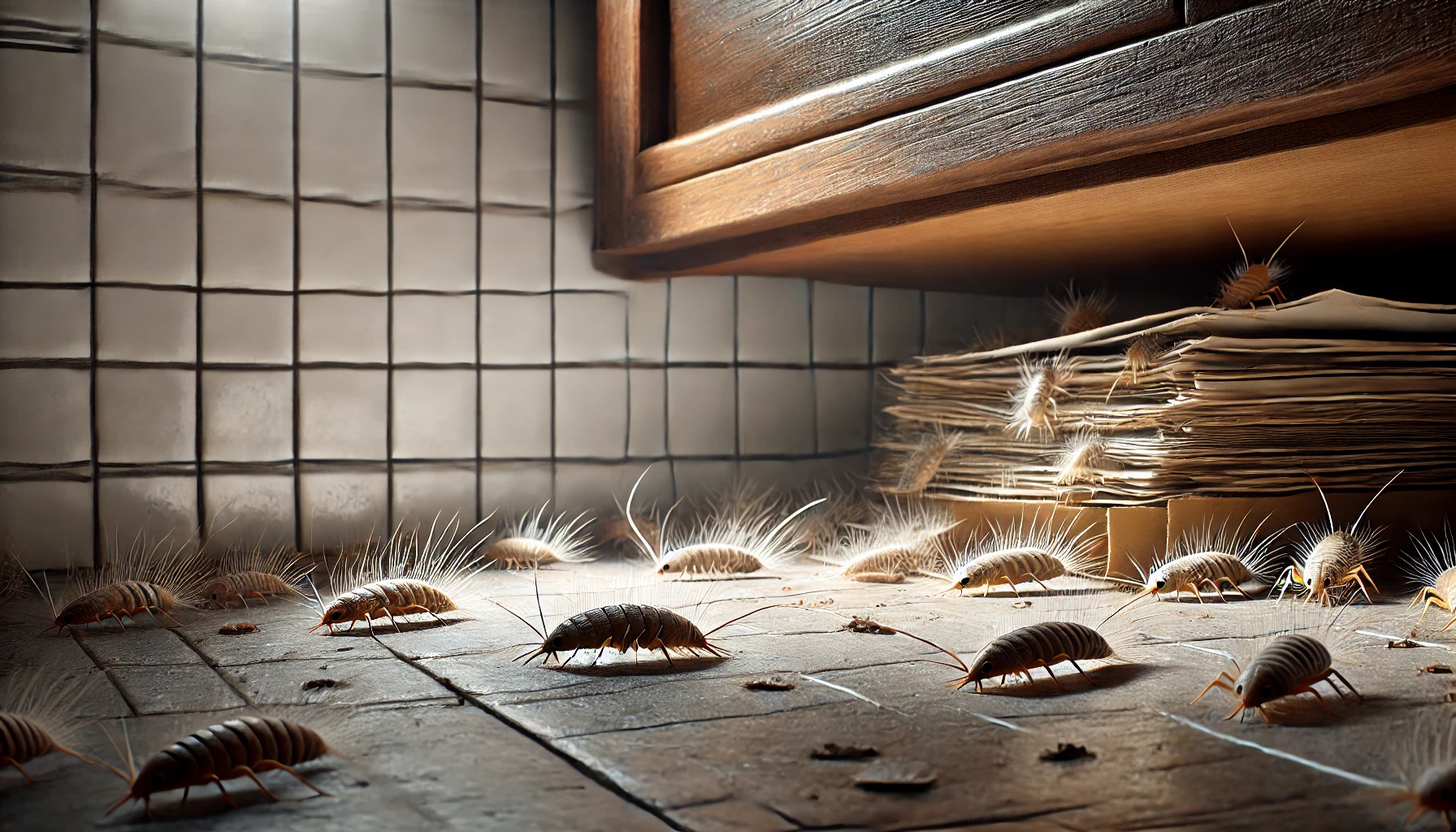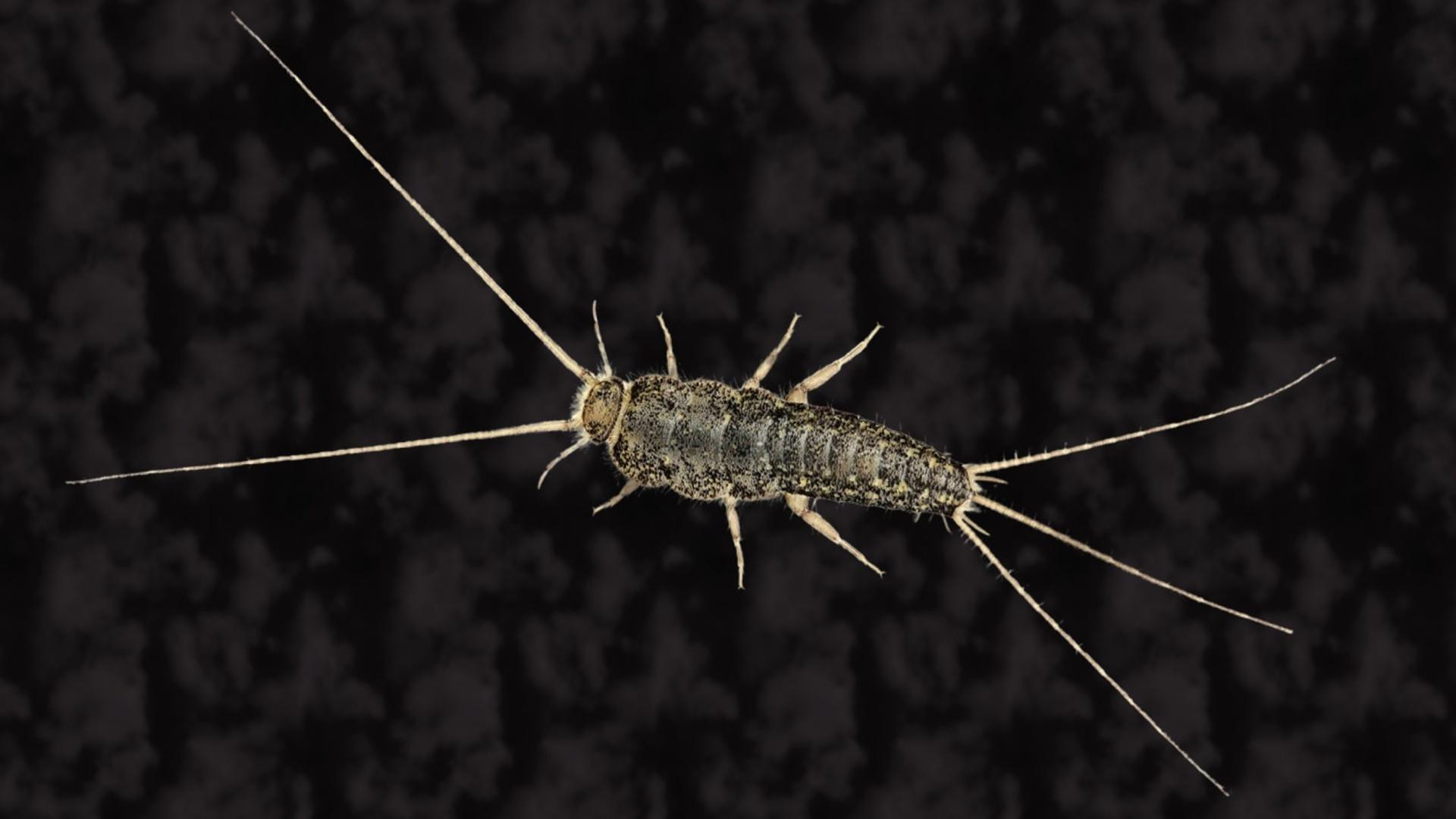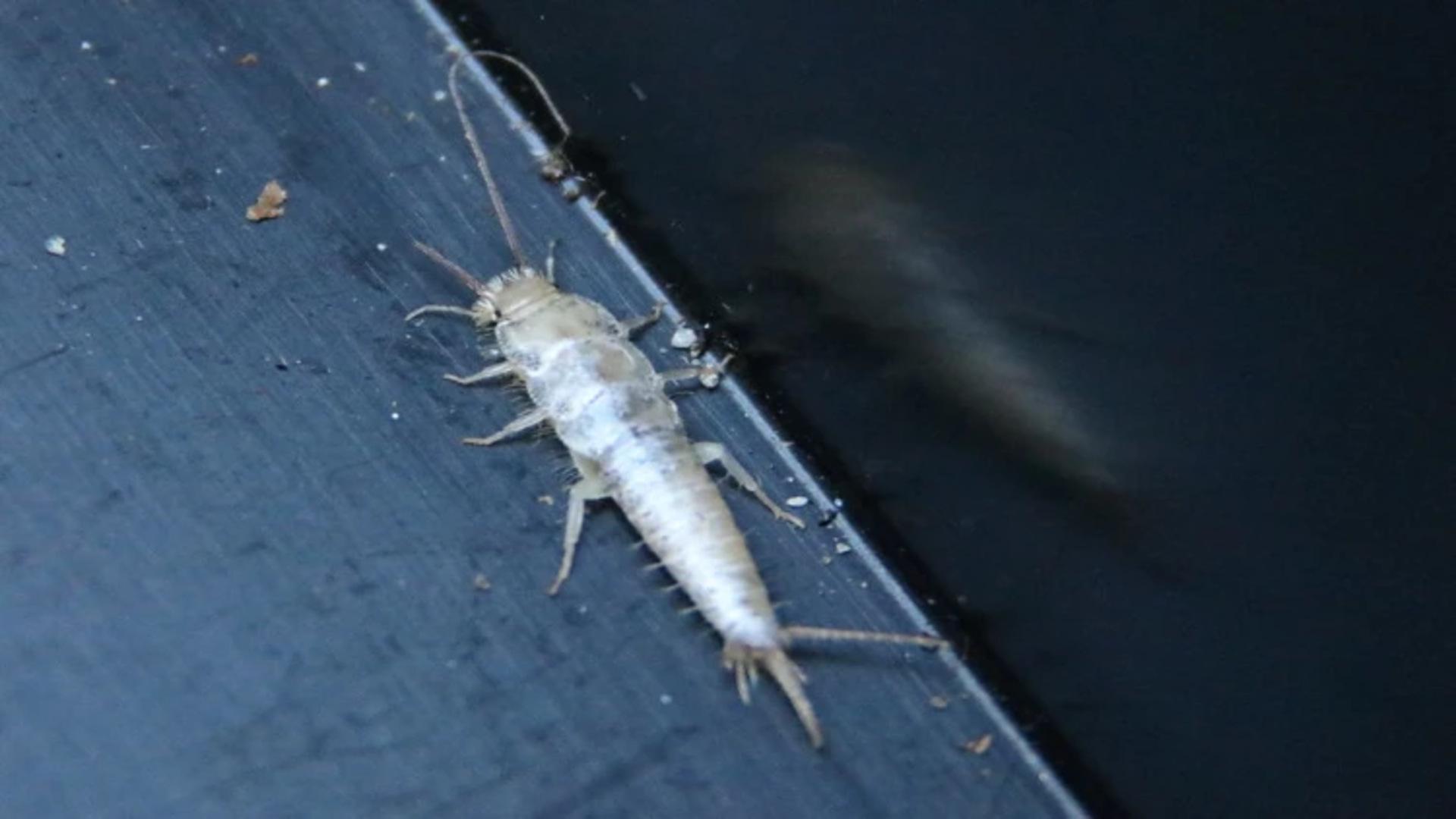Key Takeaways
-
Ancient Survivors: Silverfish have been around for over 400 million years, adapting from prehistoric forests to modern homes.
-
Preferred Conditions: They thrive in moist, dark areas like bathrooms, basements, kitchens, and attics.
-
Damage Potential: Though not harmful to humans, silverfish damage books, fabrics, wallpaper, and pantry items.
-
Prevention Measures: Control infestations by reducing humidity, sealing gaps, decluttering, and storing food securely.
-
Common Myths Debunked: Infestations stem from environmental factors, not poor hygiene or old buildings.
-
Professional Intervention: Severe infestations often require professional pest control for thorough elimination.
 Silverfish are among the most ancient and persistent insects, often found in homes and buildings. Known for their quick, darting movements and fish-like shape, the origins of silverfish go back hundreds of millions of years, adapting to diverse environments. While they do not harm humans, their presence can significantly damage books, fabrics, and stored food.
In this article, we’ll talk about the origins of silverfish, their natural and human-made habitats, and the reasons behind their ability to thrive in our homes.
If you’re seeing signs of silverfish around your property, don’t wait until they cause significant damage. Schedule a Free Pest Inspection with our experts to quickly identify and eliminate silverfish infestations.
Silverfish are among the most ancient and persistent insects, often found in homes and buildings. Known for their quick, darting movements and fish-like shape, the origins of silverfish go back hundreds of millions of years, adapting to diverse environments. While they do not harm humans, their presence can significantly damage books, fabrics, and stored food.
In this article, we’ll talk about the origins of silverfish, their natural and human-made habitats, and the reasons behind their ability to thrive in our homes.
If you’re seeing signs of silverfish around your property, don’t wait until they cause significant damage. Schedule a Free Pest Inspection with our experts to quickly identify and eliminate silverfish infestations.


Not getting a solution?
Get your free pest control estimate today!Where Do Silverfish Come From?
Silverfish are ancient insects that belong to the order Zygentoma. They have existed for over 400 million years, predating even the dinosaurs. These insects first emerged in moist, prehistoric forests, where they thrived in humid and decaying environments. Over time, they adapted to a range of climates and habitats, allowing them to survive in modern-day homes and human-built structures. Unlike many pests, silverfish did not originate as household insects. Instead, their survival instincts and feeding habits led them to moisture, starch, and sugar-rich environments.How Did Silverfish Became Household Pests?
Initially, silverfish thrived in natural environments like forests and caves, where they lived under rocks, logs, and decaying plant matter. However, as human settlements developed, silverfish adapted to living indoors. Below are some of the reasons why silverfish became household pests:Conditions That Attract Silverfish
-
Moisture and Humidity: Bathrooms, kitchens, and basements provide the perfect conditions for silverfish to survive.
-
Food Sources: Paper, fabric, glue, and food crumbs found in homes are rich in starches and sugars, which silverfish feed on.
-
Shelter: Silverfish seek out cluttered areas like attics, basements, and wall voids where they can hide undetected.

Where Do Silverfish Live?
Silverfish are adaptable insects that thrive in environments with high moisture and darkness. In the wild, they seek out places that provide shelter, food, and humidity. Their nocturnal nature drives them to hide in secluded areas during the day and emerge at night to forage for food. Here’s a closer look at the natural habitats where silverfish are commonly found: Forests Silverfish live under rocks, logs, and leaves in forests, where high humidity and ample food like decaying plant matter, fungi, and organic debris support their survival. These moist, sheltered areas offer consistent resources and protection from predators. Caves and Caverns Caves provide silverfish with a stable, humid environment and protection from predators. Here, they consume organic debris left by other insects and animals, taking advantage of the constant temperature and darkness found in these secluded spaces. Under Rocks and Debris Silverfish hide beneath rocks, mulch, and woodpiles, where humidity is high, and food like organic matter and decaying wood is plentiful. These spots offer natural protection from predators and weather extremes, making them ideal habitats.Where Are Silverfish Found in Homes?
Silverfish are well-suited to human environments, where they can find shelter, moisture, and food. Homes, buildings, and storage areas provide ideal habitats for these pests. They prefer dark, humid spaces and are often found in areas where paper, fabric, or starchy food is present. Here are the most common places you may spot silverfish indoors: Bathrooms Bathrooms offer the perfect environment for silverfish due to the high humidity caused by showers, sinks, and running water. They tend to hide near shower drains, under sinks, and in cracks or crevices near tile and grout. These damp spaces provide moisture, which is essential for silverfish survival. Kitchens Kitchens provide a steady supply of food for silverfish, including crumbs, spilled sugar, and starchy food packaging. Silverfish often hide beneath sinks, behind appliances, and inside cupboards where items like pasta, flour, and cereal are stored. Their ability to squeeze into small gaps makes it easy for them to remain hidden in kitchen storage areas. Basements Basements are naturally damp, poorly ventilated areas, making them a prime spot for silverfish infestations. Stored boxes filled with books, fabrics, and cardboard provide both food and shelter for silverfish. You’re likely to spot them around boxes, near wall cracks, or in cluttered areas where moisture collects. Attics
Attics offer silverfish a quiet, undisturbed environment with limited airflow and humidity. Since attics often house old books, cardboard boxes, and fabric items, they provide both shelter and food. Silverfish are frequently found inside boxes, behind insulation, and near old photo albums or paper-based storage.
Attics
Attics offer silverfish a quiet, undisturbed environment with limited airflow and humidity. Since attics often house old books, cardboard boxes, and fabric items, they provide both shelter and food. Silverfish are frequently found inside boxes, behind insulation, and near old photo albums or paper-based storage.
What Kind of Environment Do Silverfish Like?
Silverfish prefer environments with moisture, food, and shelter. They thrive in humid areas like bathrooms, kitchens, and basements, where high humidity keeps them hydrated and softens materials like paper and fabric, making them easier to consume. In addition to moisture, silverfish seek starchy and sugary food sources such as books, wallpaper, fabric, and pantry staples like flour and cereal. Cluttered storage areas with cardboard boxes, old furniture, and paper provide hiding spots, allowing them to remain concealed while feeding and reproducing. This mix of humidity, food, and shelter creates the perfect habitat for silverfish.How to Prevent Silverfish From Invading Your Home?
Preventing silverfish infestations is easier than eliminating them. Here are simple yet effective ways to protect your home:Tips to Prevent Silverfish Infestation
-
Use dehumidifiers in basements, attics, and bathrooms to lower humidity and prevent silverfish survival.
-
Block cracks and gaps around windows, doors, and baseboards with caulk to block silverfish entry points.
-
Store pantry items like flour, cereal, and pasta in airtight containers to eliminate access to food sources.
-
Declutter attics, basements, and closets by removing old newspapers, magazines, and cardboard boxes to reduce hiding spots.

Myths and Facts About Silverfish
There are many misconceptions about silverfish, from their preferred habitats to their impact on humans. Here are some common myths and related facts:| Myth | Fact |
|---|---|
| Silverfish only live in old houses. | Silverfish can infest any building with the right conditions. |
| Silverfish are harmful to humans. | Silverfish do not harm humans but can damage belongings. |
| Silverfish are only found in basements. | They can be found in various parts of the home, including kitchens and bathrooms. |
| Silverfish only feed on paper. | Silverfish eat a range of materials, including textiles and glue. |
| Silverfish infestations are a sign of poor hygiene. | Infestations are more about environmental conditions than cleanliness. |





